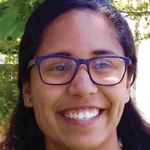One day not too long ago, right smack in the middle of Thanksgiving and Christmas, I was sitting at the roundtable of our conference room, also known as the solarium due to its sunny disposition. The spirit was high, and we all felt like we could bring some joy to the clinic that day. I looked at the young faces of the residents working with me that morning—laughing, exchanging ideas, being silly, teaching, giving feedback, listening. They were talking excitedly about life and medicine. Each of them brilliantly complemented each other: mom of 10-month-old baby girl and native of Massachusetts (Heather); vibrant woman from the Dominican Republic with contagious energy (Anais); the Lebanese resident who just matched to a pulmonary fellowship (Elias); and the female culinary enthusiast from Ohio (Gabrielle).
The clinic has a unique structure and a long history in the Providence, R.I., academic community. I am a director of the rheumatology fellowship program at Roger Williams Medical Center, Providence, R.I. Every month, I accept rotations from Boston University-affiliated Roger Williams Medical Center’s Internal Medicine Program, from the Brown University, Rhode Island Hospital’s Internal Medicine program and from neighboring Memorial Hospital. A few times a year, podiatry residents do a rotation with us, as well.
Educators and program directors across the country debate and analyze how to attract young people to rheumatology. I wondered if reaching out to trainees may provide us with a valuable, but different, perspective on the matter. So at the crossroads of four training programs, three of which are internal medicine, I am animated by my young colleagues and curious about how I can make this rotation better and more beneficial for them. A happy resident may be my future happy rheumatology fellow.
Thus, I asked this group to help me understand what brings them to this clinic and how they would improve the experience. I asked residents to speak out, and here are the suggestions they had.
Anais Ovalle, MD
 A past senior resident suggested that I should complete a rheumatology rotation. At first, I was reluctant, mainly because I just recently became accustomed to managing a majority of cardiac, pulmonary, gastrointestinal, hematological, oncologic and infectious illnesses. As I reflected, I realized I had a major knowledge gap, one I had not previously seen. My institution did not offer a rheumatology rotation, but Roger Williams Medical Center did.
A past senior resident suggested that I should complete a rheumatology rotation. At first, I was reluctant, mainly because I just recently became accustomed to managing a majority of cardiac, pulmonary, gastrointestinal, hematological, oncologic and infectious illnesses. As I reflected, I realized I had a major knowledge gap, one I had not previously seen. My institution did not offer a rheumatology rotation, but Roger Williams Medical Center did.
This rotation is unique in that it includes residents from all other programs around the state. This offers a new place with new faces, and alongside a hesitancy in my abilities to diagnose and manage these conditions, this seemed like a perfect resident rotation.


